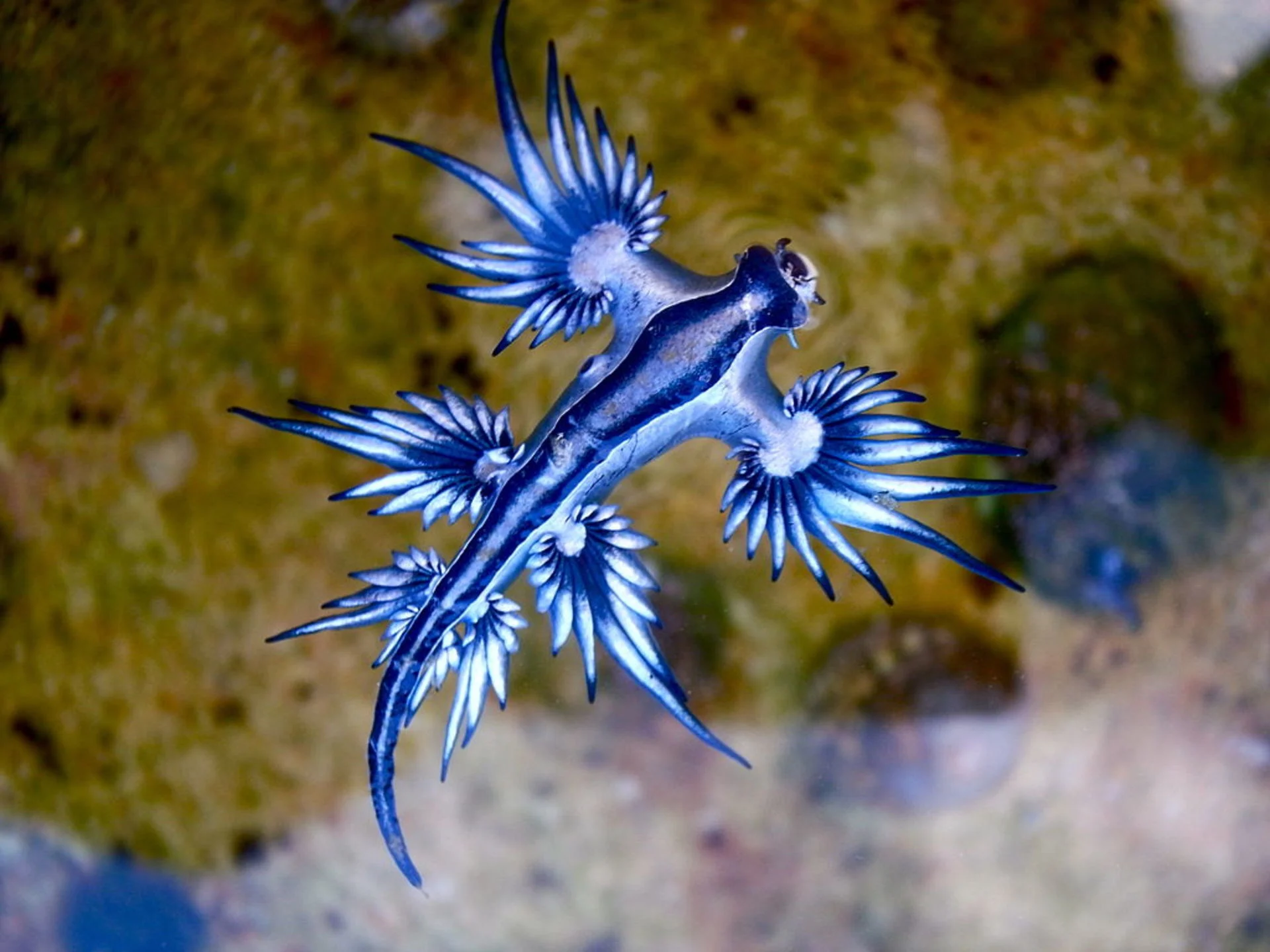
Enchanting but dangerous 'blue dragon' washes ashore in Texas
The creature, actually a kind of sea slug, looks delicate, but its predatory diet has side effects that can be harmful to humans who handle them.
A rarely-seen kind of sea slug, fancifully called a 'blue dragon', has drawn some attention after washing ashore at a Texas park last week.
Images of the creature, proper name Glaucus atlanticus, were posted to the Facebook page of Texas' Padre Island National Seashore last week. It's no more than 3 cm long, but its eye-catching blue hue is hard to miss.
The creature was encountered by a family walking along the beach, spotted by 7-year-old Hunter Lane, with 5-year-old Wyatt Lane finding others as they moved along.
“Hunter really wanted to touch it, I don’t blame him, I did too, as they look very soft and squishy," Lane told KSAT. "But we discussed that since we have no clue what they are we better not. After thinking about it he even said ‘he might be like the poison dart frog mom, he is kind of brightly coloured, which is a warning.' Smart kid."
That prudence likely helped the group dodge a painful ordeal.
Blue dragons usually float in the ocean, ferried along by winds or ocean currents, which occasionally wash them up on shore. But despite its sluggish nature, the species is most definitely a predator, and among its prey is the Portuguese man-o-war, which looks like a jellyfish but is actually a 'colony' of specialized organisms, which includes cells organized into extremely venomous tentacle-like appendages.
Those venomous cells are what make the blue dragon dangerous to humans, as it embeds those cells within its own body as a defence against other predators. Any humans who pick one up risk painful and potentially fatal stings.
"Because they are able to concentrate the stinging cells together, their sting can be more painful than a man-of-war's!" park staff wrote on Facebook. "So, if you see a dragon in the park, be amazed as they are a rare find, but also keep your distance!"











